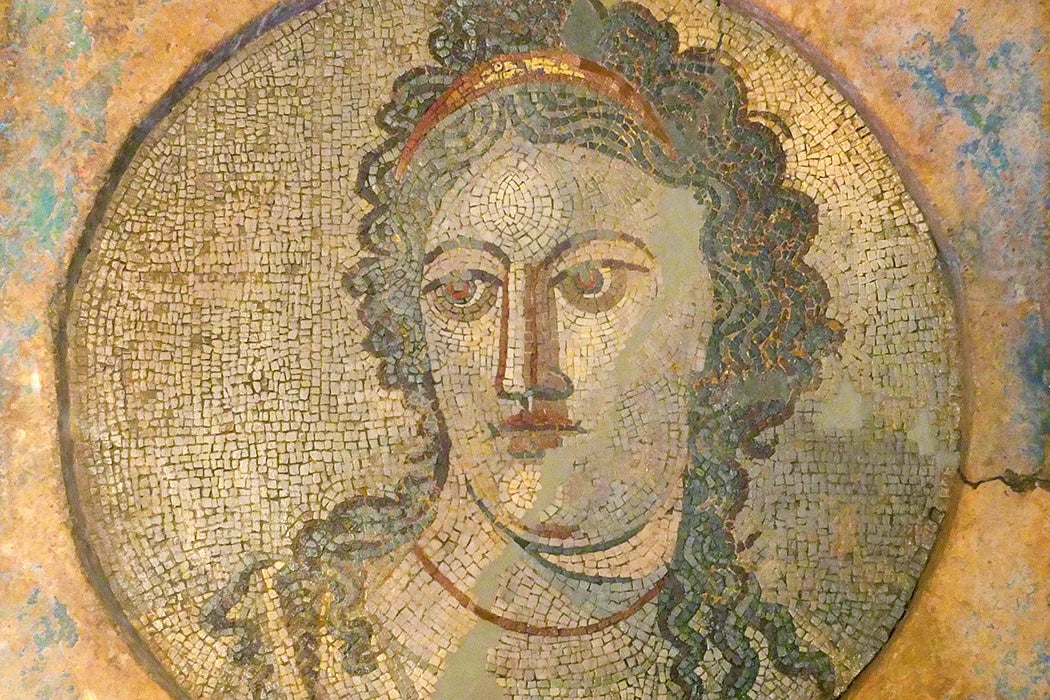The ancient Greek healing god Asklepios was a team player. Before supplicants could undergo his sanctuaries’ signature incubation ritual—which meant spending the night in a dormitory-like building where Asklepios would (in theory) appear in a dream and offer a miracle cure—they were asked to sacrifice to a wide range of other gods.
Some of these deities have obvious connections to health and healing. One is Apollo, who in Greek myth had the power to cause epidemics (and, not coincidentally, was also Asklepios’s father). But other deities are less easily explained. A particularly baffling one is Mnemosyne, the goddess of memory and the mother of the nine Muses.
Although the sources tell us that Mnemosyne was important at some Greek healing sanctuaries, they don’t explain why. To understand her presence and prominence at these sanctuaries, classicist Stephen P. Ahearne-Kroll writes in a 2014 paper, “we have to approach the problem indirectly, and in the process flesh out what it actually means to remember an encounter with a divinity.”
Ahearne-Kroll surveys other contexts in which Mnemosyne appears. She is strongly associated with epic poetry, and bards often began their performances with invocations to her or to her daughters, the Muses.
Intriguingly, Mnemosyne also appears in the literature of Greek mystery cults. One hymn to the goddess unsurprisingly entreats her to “awaken memory” for new initiates during a Bacchic ritual, but the hymn also describes her as the deity who “holds together” the human mind. The implication here is that being initiated into a mystery cult was such an overwhelming experience that without special protection the fragile human mind might be irreparably destroyed. Mnemosyne, therefore, not only helped initiates remember the esoteric secrets revealed to them during mystery cult rituals, she ensured that their minds stayed intact throughout the process.
Was Mnemosyne invoked to serve a similar purpose during incubation rituals at healing sanctuaries? Asklepios was a god, after all, and to encounter him (or to dream of encountering him) would have been an intense experience for someone who believed in his power.
To illustrate how Mnemosyne’s gifts might have been seen in the context of ancient Greek healing sanctuaries, Ahearne-Kroll discusses some of the iamata, or patient testimonials, that were inscribed and displayed there.
Weekly Newsletter
Scholars believe that these narratives, each of which describes an ailment, incubation, and cure in the first person, from the patient’s perspective, document actual supplicants’ experiences—or, rather, what they believed they had experienced—and were recorded by priests shortly after the supplicants awoke from their incubations. These texts simultaneously honored the god and served as a sort of advertisement for the sanctuary, attracting future supplicants through the words of satisfied past patrons.
The iamata, in other words, might be exactly what the sanctuary priests had in mind when they asked supplicants to appeal to Mnemosyne just before beginning their incubations. “Everything hinged on the incumbent remembering the dream and attributing the cure to the god,” Ahearne-Kroll concludes. Without Mnemosyne, “the supplicant might have experienced something during incubation, perhaps even a cure, but none of the processes that happened after waking—remembering the encounter with the god and any instructions possibly received for continued health or proper honoring of the god—would be possible.”
Support JSTOR Daily! Join our new membership program on Patreon today.







